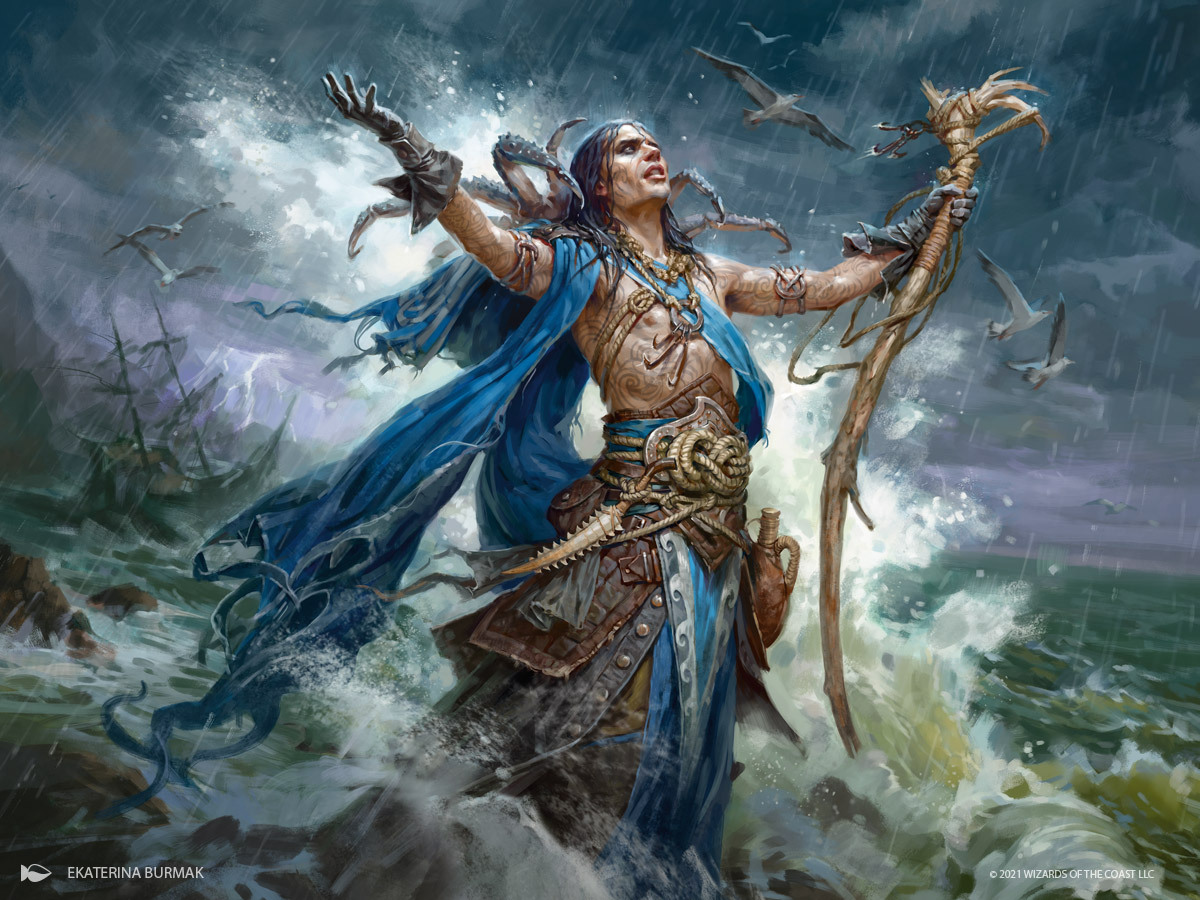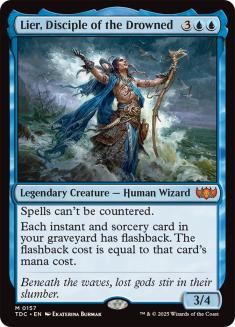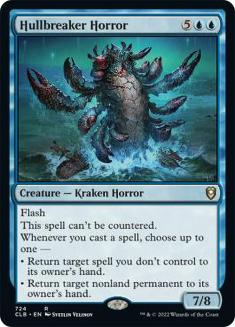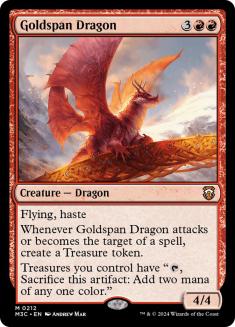Magic has changed, and with it, so should we.
I’ve played this game for eighteen years now, and through that time I’ve had to change the way I approach it on more than one occasion. That time has come again, so today I’ll do my best to rewrite the way I (should) select decks and proper ways to correctly metagame for Magic in 2022. We’ll kick things off by revisiting one of the oldest questions in the book:
“Should I play the best deck, or the deck I know best?”
For years, decades even, this question has been debated by my peers as there were many things to take into account. First and foremost, it was important to ask, “What does Magic mean to the person answering this question?” If someone’s goal is to spike a single tournament, then playing the deck they know best makes a lot of sense. If they aspire to one day beat Paulo Vitor Damo da Rosa in the World Championship Finals, they need to start learning how to play the best decks.
There are other variables to take into account for the individual, such as card availability and personal metagames. That’s why topics like today’s always come with caveats, as it’s always important to balance your personal situation with the lessons being taught. I’m here to provide the “broader strokes” solutions, but in the end it’s up to you to make the final decisions.
1. Always play the best deck in Standard, Alchemy, and Historic.
Getting back to the whole “Magic has changed” narrative, it’s clear that the game has had a significant shift in how card advantage is acquired. When I first started seeing results on the Pro circuit I followed a pretty clear rule — card advantage + good interactions. Simply put, the better deck was the one that could gain card advantage while having good points of interaction against their opponent while also mitigating the effectiveness of the opponent’s interaction.
That’s not exactly the case anymore. Well, it is, but the main difference is that more and more cards get printed that create value (aka card advantage). So much so that we’ve seen traditional control decks no longer be competitive strategies, as it’s almost impossible to run anyone out of cards anymore. That’s why we see more “midrange” control decks built around cards like Lier, Disciple of the Drowned or Hullbreaker Horror. That’s because they need to turn the corner, as they’ll never attrition their opponent out.
The Rise of Velocity
If we take a look back at the most successful decks post-War of the Spark, most of them generated a significant amount of velocity. They’d cast spells like Growth Spiral to accelerate into things like Nissa, Who Shakes the World or Wilderness Reclamation, interact minimally and only when necessary, and then eventually overpower an opponent by drawing most of their deck with Hydroid Krasis or Expansion // Explosion. The best decks never tried to kill their opponent; they tried to bury them in a never-ending snowball of cards. We can even see this now with Izzet Epiphany, a deck whose sole mission is to eventually take every single turn.
This new era of card design has come with many problems, as it’s apparent that Wizards of the Coast (WotC) is having balancing issues. We’ve seen a ton of bans over the past three years, yet those decisions ultimately felt more like “kingmaker” decisions as there always seems to be another “best deck” waiting to take the now-banned one’s place. This has caused Standard, Historic, and now even Alchemy to constantly feel unbalanced, as there always seems to be one deck above the rest.
This has taught me that it’s almost always correct to just play whatever the best deck is. I regrettably didn’t do that for the last Set Championship and it absolutely ruined my chances to Top 8 after a 6-1 finish in Historic. I was gutted by my terrible choice of Mono-Green Aggro❄ in Standard. I got scared of Izzet Epiphany mirrors and a warped metagame, and took the anti-Izzet deck to battle instead, where I finished 1-2 against it anyway.
Sure, the entire metagame will be targeting you if you always play the “best deck,” but that’s fine. You’ll be velocity-driven, and they’ll try to beat you down or interact with you, two things that are worse than what you’ll be doing more often than not. You also may need to invest a decent chunk of time into learning the deck, but you can continue to build a foundation for weeks to come, as the deck will most likely continue to be the best choice.
2. Play the best deck, and then prioritize the mirror match.
Creatures (3)
Lands (21)
Spells (36)

This tip pertains mostly to Standard, possibly Alchemy, and less so the other formats. That’s due to how many top-tier decks exist in each format. Lately Standard consists of a top deck, a couple of decks that target the top deck, and then a few more that target the decks that target the top deck. We see this now in Standard, and have for so many months that the format’s effectively solved.
When formats break down like this, it’s vital to prepare for the mirror match when playing the best deck. This won’t always guarantee victory, but it sure does set you up for it. What happens is you’ll play tight games against other decks in the field because you might be missing a few cards for the matchups. You should come out ahead more often than not though thanks to playing the deck that’s inherently better.
Winning more in these matchups isn’t a priority because it takes away from your mirror matches. These are the matches where a few select card choices can be the difference of winning and losing. Take Yuuki’s list for example; the two Behold the Multiverse and Test of Talents are not what you want against a large swath of the metagame, yet they shine bright in the Izzet Epiphany mirrors.
3. Play singletons.
This tip is more deck construction than selection, but it slots in well with today’s topic. With cards getting more powerful, something interesting started occurring when I was working on decks. The first thing I noticed is the downside of playing four of a legendary permanent wasn’t that bad. It wasn’t just that the cards were so powerful that I always wanted to draw them; casting the extra copies still netted value.
On the flip side of this, there was now an abundance of insanely powerful cards to choose from — way more than necessary when trying to find a 60-card constructed deck. This is easily shown when we all realized Yorion decks didn’t even have to sacrifice card quality in the slightest, and still don’t in Historic!
Creatures (41)
- 4 Wall of Blossoms
- 3 Elvish Visionary
- 4 Mirror Image
- 1 Fblthp, the Lost
- 4 Soulherder
- 4 Charming Prince
- 3 Skyclave Apparition
- 4 Glasspool Mimic
- 1 Elite Spellbinder
- 4 Prosperous Innkeeper
- 1 Timeless Witness
- 1 Guardian of Faith
- 3 Inquisitor Captain
- 4 Grizzled Huntmaster
Lands (27)
Spells (12)

This across-the-board increase in general card quality now allows us to turn “fun-ofs” into competitive one-ofs that allow for games to take unique paths that opponents can’t really prepare for. If we look back at Yuuki’s Izzet Epiphany deck once again, we see this executed beautifully.
This spread of individual threats can swing games when drawn, yet are impossible to play around in practice. Most importantly, adding them to the deck doesn’t really diminish its overall potency. In fact, drawing multiples of any of these cards can sometimes be catastrophic, while a mixture can create amazing sequences.
Be sure to think about this next time you’re working on any velocity-driven decks, as there are probably a few one-ofs out there worth trimming for.
4. Have confidence in your abilities when selecting a deck in a new format.
This lesson pertains to Alchemy, which is this weekend’s Arena Open format. Not much has changed in the format since my evaluation of it in my last article, so be sure to check it out if you haven’t already.
While Alchemy is similar to Standard, not much ports over to the new format. Too many cards got “nerfed” like Faceless Haven, Esika’s Chariot, and Luminarch Aspirant, making the aggressive decks slightly underpowered compared to the Azorius, Esper, Mono-Black, and Orzhov Control decks. Decks supporting cards like Town-razer Tyrant have been doing well on the ladder, but they don’t hold up in tournament play or with public opinion. Esper Clerics also seems like a fine choice thanks to the power of Inquisitor Captain. While I believe control decks to be the best choices, crowning a “best deck” hasn’t really happened yet.
You might feel lost in your ability to select a deck, or not even really know where to begin. What’s important is to recognize that almost everyone else is in the same boat when it comes to newer formats. The biggest mistake you can make during these times of uncertainty is basing your deck selection on mitigating your own mistakes. I’ve seen this many times in the past, with players just defaulting to the most linear and aggressive deck, hoping to exploit their opponents’ deckbuilding and play mistakes.
While putting your opponent in spots to make mistakes is a great tool to have in your arsenal, it should not be your entire gameplan. You want to be making the decisions when $2,500 or a qualification to a Set Championship is on the line. It’s totally different if you’ve tested and believe the linear aggressive deck like Mono-Green Aggro❄ is the best choice. In that case, jam it! Just don’t do so because you’re not sure if the control deck you like should lean more anti-aggro than anti-control, or whatever. Put in the work, figure it out, and have confidence that you’ve made the correct choices and will continue to do so.
Mistakes will happen, and they will cost you tournaments. It’s just that defaulting to this mindset will cost you every tournament you play in. Cards are more powerful now, and the best decks tend to play a lot of them. They may be difficult to build around and pilot, but they can also be forgiving as well. You just need to have confidence that you’re capable of riding the wave and can make the difficult decisions when they arise.
5. Play the deck you know best in Modern.
Now we get to Modern, where a lot of the same rules actually still apply. Modern has changed a lot since Modern Horizons 2 came out, making it much more velocity-based than it previously was. There’s just one huge difference that swings the pendulum enough to make this a “play what you know” format — there are too many unique decks out there!
In Standard, picking up the “best deck” can be difficult at first, but you’ll only have to worry about learning three to five matchups including the mirror. Modern is a completely different beast with upwards of ten to twelve defensible choices at any given time, and then another twenty archetypes people play because ‘reasons.’ To make matters worse, while there are dozens of decks floating around, the deemed “best decks” often get the most attention when everyone’s building sideboard plans.
Creatures (23)
- 4 Ornithopter
- 2 Kor Outfitter
- 4 Stoneforge Mystic
- 4 Memnite
- 4 Puresteel Paladin
- 1 Gingerbrute
- 4 Esper Sentinel
Lands (23)
Spells (14)

Mono-White Hammer (Lurrus) is arguably the best deck in Modern and the only deck I own on Magic Online (MTGO), and still I played Jund Midrange at the Star City Games Invitational. One of the reasons for this has nothing to do with this article; I have a serious condition that forces me to be a living meme.
The other, more important, reason is that I didn’t have enough knowledge of the format going into the tournament. I had just picked up Modern again after about two years of ignoring it, and had no confidence in playing Mono-White Hammer optimally. Everyone was going to make sure they had the tools to beat the deck, and I didn’t think I had the extensive knowledge to navigate through that.
Now, when I say “play the deck you know best,” that doesn’t mean you should bring Orzhov Eldrazi to battle. You still need to play a competitive deck to be successful. It just means that if you know a competitive deck, you should play it over just picking up something slightly better. If you have the time and dedication to learn the best deck, then by all means do that. Just know that your extensive knowledge of a Tier 2 deck like Azorius Control will carry you further than a Tier 1 deck that you’re not familiar with.
I hope this article helps you in your 2022 competitive endeavors. I’ll be coming back to this myself, as I don’t want to repeat many of the same mistakes I’ve been recently making in my own deck selections. It’s been far too long since I’ve tasted Magic glory and I plan to do so in the next Set Championship.
Hope to see you there!








